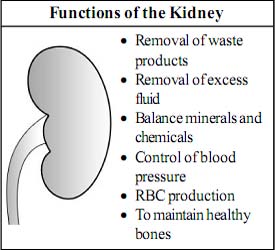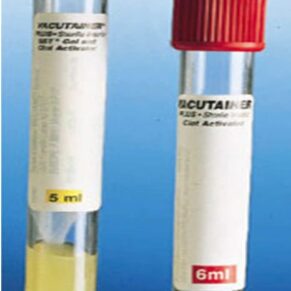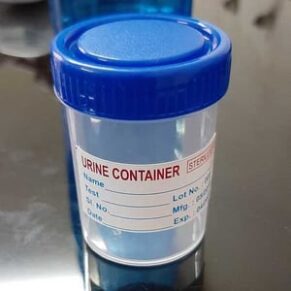- Your cart is empty
- Continue shopping
Shop
Information about the KIDNEY, its structure, its functioning, its symptoms, its failure
Kidney and its Function
The kidneys are among the most vital organs of the human body. Malfunction of the kidneys can lead to serious illness or even death. Each kidney has a very complex structure and function.
They have two important functions namely: to flush out harmful and toxic waste products and to maintain balance of water, fluids, minerals and chemicals i.e., electrolytes such as sodium, potassium, etc.
Structure of the kidney
The kidney produce urine by removing toxic waste products and excess water from the body. Urine formed in each kidney passes through the ureter, flows into bladder before finally being excreted through the urethra.

Most people (males and females) have two kidneys.
The kidneys are located at upper and back side of the abdomen, on either side of the spine (see diagram). They are protected from damage by the lower ribs.
The kidneys lie deep inside the abdomen so normally one cannot feel them.
The kidneys are a pair of bean shaped organs. In adults, a kidney is about 10 cm long, 6 cm wide and 4 cm thick. Each kidney weighs approximately 150-170 grams.
Urine formed in the kidneys flow down to urinary bladder and then through the ureters. Each ureter is about 25 cm long and is a hollow tube- like structure made up of special muscles.
The urinary bladder is a hollow organ made up of muscles, which lie in the lower and anterior part of the abdomen. It acts as a reservoir of urine.
The adult urinary bladder hold about 400-500 ml of urine; when filled to near capacity, a person feels the urge to pass urine.
The urine in the bladder is excreted through the urethra during the process of urination. In females, the urethra is relatively short, while it is much longer in males.
Location, structure and functions of the kidneys are the same in males and females.
Functions of the kidney
Why are the kidneys essential for living?
- We consume different kinds and quantities and kind of food every day.
- The quantity of water, salts, and acids in our body also varies every day.
- The continuous process of converting food into energy produces harmful toxic materials.
- These factors lead to changes in the amount of fluid, electrolytes and acids in the body. The accumulation of unwanted toxic materials can be life threatening.
- Each kidney carries out the essential job of flushing out harmful and toxic by-products. At the same time, they also regulate and maintain the right balance and levels of water, acids and electrolytes.
What are the functions of the kidney?
The primary function of he kidney is to make urine and purify the blood. Each kidney removes waste materials, and other chemicals which are not equired by the body. mportant functions of he kidney are described below.
1. Removal of waste products
Purification of blood by removal of waste products is the most important function of the kidney.
The food that we consume contains protein. Protein is necessary for the growth and repair of the body. But as protein is utilized by the body it produces waste products. Accumulation and retention of these waste products is similar to retaining poison inside the body. Each kidney filters blood, and toxic waste products which are eventually excreted in the urine.
Creatinine and urea are two important waste products, that can easily be measured in the blood. Their “values” in blood tests reflects the function of the kidney. When both the kidneys fail, value of creatinine and urea will be high in blood test.
2. Removal of excess fluid
The second most important function of the kidney is the regulation of fluid balance by excreting excess amount of water as urine while retaining the necessary amount of water in the body, that is essential for living .
When the kidneys, fail they lose the ability of removing this excess amount of water. Excess water in the body leads to swelling.
3. Balance minerals and chemicals
The kidneys play another important role of regulating minerals and chemicals like sodium, potassium, hydrogen, calcium, phosphorus, magnesium and bicarbonate and maintains normal composition of body fluid.
Changes in the sodium level can affect person’s mental state, while changes in the potassium level can have serious adverse effects on the rhythm of the heart as well as functioning of the muscles. Maintenance of normal level of the calcium and phosphorus is essential for healthy bones and teeth.
4. Control of blood pressure
The kidneys produce different hormones (renin, angiotensin, aldosterone, prostaglandin etc) which help regulate water and salt in the body, which plays vital roles in the maintenance of good blood pressure control. Disturbances in hormone production and regulation of salt and water in a patient with kidney failure can lead to high blood pressure.
5. Red blood cells production
Erythropoietin is another hormone produced in the kidneys, it plays an important role in the production of red blood cells (RBC). During kidney failure, production of erythropoietin is decreased, which in turn leads to decreased production of RBC resulting in low hemoglobin (anemia). This is the reason why in patients with kidney failure, the hemoglobin count does not improve despite supplementation with iron and vitamin preparations.
6. To maintain healthy bones
The kidneys convert vitamin D into its active form which is essential for the absorption of calcium from food, growth of the bones and teeth, and keep the bones strong and healthy. During kidney failure, decreased active vitamin D leads to decreased, growth of bones and they also become weak. Growth retardation may be sign of kidney failure in children.
Urine formation
How is blood purified and urine formed?
In the process of blood purification, the kidneys retain all necessary substances and selectively removes excess fluid, electrolytes and waste products.
Let us understand this complex and amazing process of urine formation.
- Did you know that every minute, 1200 ml of blood enters the kidneys for purification, which is 20% of the total blood pumped by the heart? So in one day, 1700 liters of blood is purified!
- This process of purification occurs in small filtering units known as nephrons.
- Each kidney contains about one million nephrons, and each nephron is made up of glomerulus and tubules.
- Glomeruli are filters with very tiny pores with the characteristic of selective filtration. Water and small-sized substances are easily filtered through them. But larger-sized red blood cells, white blood cells, platelets, protein etc. cannot pass through these pores. Therefore such cells are normally not seen in the urine of healthy people.
The kidney’s chief function is to remove waste and harmful products and excess water in the form of urine.
- The first step of urine formation occurs in the glomeruli, where 125 ml per minute of urine is filtered. It is quite astonishing that in 24 hours, 180 liters of urine is formed. It contains not only waste products, electrolytes and toxic substances, but also glucose and other useful substances.
- Each kidney performs the process of reabsorption with great precision. Out of 180 liters of fluid that enters the tubules, 99% of fluid is selectively reabsorbed and only the remaining 1% of fluid is excreted in the form of urine.
- By this intelligent and precise process, all essential substances and 178 liters of fluid are reabsorbed in the tubules, whereas 1-2 liters of fluids, waste products, and other harmful substances are excreted.
- Urine formed by the kidneys flow to the ureters, and passes through the urinary bladder and is finally excreted out through the urethra.
Can there be variation in the volume of urine in a person with healthy kidney?
- Yes. The amount of water intake and atmospheric temperature are major factors which determine the volume of urine that a normal person makes.
- When water intake is low, urine tend to be concentrated and its volume is decreased(about 500 ml) but when a large volume of water is consumed, more urine is formed.
- During the summer months, because of perspiration caused by high ambient temperature, the volume of urine decreases. During winter months it is the other way round – low temperature, no perspiration, more urine.
- In a person with a normal intake of water, if the volume of urine is less than 500 ml or more than 3000 ml, it could indicate that the kidneys need closer attention and further investigation.
Too little or too much volume of urine formation, could be an indication that the kidney seeks attention and investigation.
Symptoms of Kidney Diseases
Symptoms of kidney diseases vary from person to person. A lotdepends on the type of underlying disease and its severity. Symptoms are often, vague and non-specific, and therefore the disease is difficult to diagnose in the early stages.
Common symptoms of kidney diseases :
- Swelling of the face Swelling of face, abdomen and feet, is a frequent presentation of kidney disease. One characteristic of swelling due to kidney disease is that it is usually noticed first below the eyelids (this is called periorbital edema) and is most noticeable in the morning.Kidney failure is a common and important cause of swelling. But one needs to bear in mind that swelling does not necessarily indicate kidney failure. In certain kidney diseases, despite normal kidney function , swelling still occurs (e.g. nephrotic syndrome). Equally important, is the fact that swelling may not be seen in some patients despite significant kidney failure.
- Loss of appetite, nausea, vomiting Loss of appetite, abnormal taste in the mouth and poor food intake are common problems faced by a person with kidney failure. With worsening of kidney function, there is increased level of toxic substances, which leads to nausea, vomiting and occassionlly, intractable hiccups.
- High blood pressure – Hypertension In patients with kidney failure, hypertension is common. If hypertension occurs at a young age (less than 30 years) or blood pressure is very high at the time of diagnosis, the reason may be that of a kidney disease.
Swelling of face below the eyelids (called periorbital edema) is the most common symptom of kidney diseases.
-
- Anemia and weakness Generalized weakness, early fatigue, poor concentration and pallor are common complaints of a person with anemia (low hemoglobin level). At times these may be the only complaints of a person in the early stages of chronic kidney failure. If anemia does not respond to standard treatment, it is essential to rule out kidney failure.
- Nonspecific complaints Low back pain, generalized body aches, itching and leg cramps are frequent complaints in kidney disease. Retardation of growth, short stature and bending of leg bones are common in children with kidney failure.
- Urinary complaints
Common urinary complaints are :
-
- Reduction in urine volume, is very common in various kidney diseases.
- Burning sensation in urine (dysuria), frequent urination (frequency) and passing of blood or pus in urine are symptoms of urinary tract infection.
- Obstruction to the normal flow of urine can lead to difficulty in ‘voiding’ (passing urine), and poor stream of urine. In severe conditions, complete inability to pass urine can occur.
Although a person may have some of the above mentioned symptoms and signs, it does not necessarily mean that the person is suffering from kidney disease. However, in the presence of such symptoms, it is highly recommended to consult the doctor and to rule out any possibility of kidney disease and other systemic illnesses by blood and urine tests. It is important to remember that serious kidney problems may exist silently for a long period without significant symptoms andsigns.
Rule out underlying kidney diseases if severe hypertension is detected at a young age.








Customer reviews
Reviews
There are no reviews yet.
Write a customer review